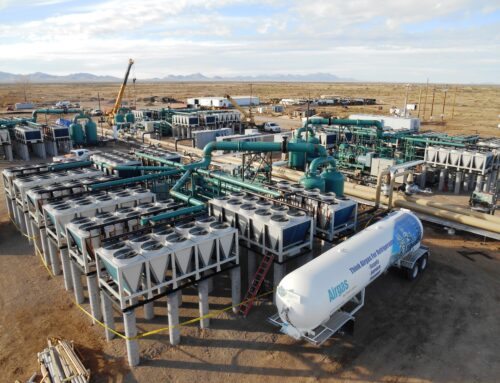Bitcoin Erases 2025 Gains: Is $83,500 the Next Stop or $120K Recovery?
November 25, 2025
Bitcoin (CRYPTO: BTC) has given back everything it gained in 2025. The rally started in early January and peaked at $126,000 on October 6, but the Bitcoin price erased all those gains over the past six weeks. ETF flows reversed, miners sold into weakness, and macro conditions turned against risk assets. BTC briefly touched $81,000 in mid-November before stabilizing in the low $90,000s.
The market is now caught between opposing forces. Long-term holders and institutions keep buying, which has prevented Bitcoin from falling below $85,000. But technical indicators point to more downside. Thin liquidity is amplifying moves and the December Fed meeting could determine whether the Bitcoin price tests $83,500 support or recovers toward $120,000.
Bitcoin Price Journey: From $126K Peak to $86K in Six Weeks
Bitcoin’s rally this year started strong but ended in one of its sharpest reversals since spot ETFs launched. Early July saw BTC around $88,000 before institutional buying through BlackRock, Fidelity, and Ark pushed the Bitcoin price into the $109,000-$112,000 range by late July. ETF inflows stayed strong through August as cooling inflation made risk assets attractive.
September and October marked the peak. Bitcoin spiked to $126,210 on October 6 before stalling as ETF inflows slowed, bond yields climbed, and miners began selling. Liquidity thinned while capital rotated into high-beta altcoins like Solana (CRYPTO: SOL).
November reversed everything. On November 21, nearly $1 billion left Bitcoin ETFs in a single day. The Bitcoin price dropped through $100,000 and kept sliding to $85,000 in mid-November. Total November ETF outflows hit $3.79 billion, surpassing February’s record of $3.56 billion. Six months of gains unwound in six weeks.
Why Bitcoin Collapsed: Four Factors Behind the Selloff

Bitcoin’s selloff wasn’t one catalyst. Here are the four key factors that broke the Bitcoin price.
Institutional ETF Demand Reversed After Front-Loading Early
The early-year ETF rush was heavily front-loaded as institutions filled Bitcoin allocations in Q1 and Q2. By October, those same institutions shifted to rebalancing and profit-taking into year-end. Weekly flows turned increasingly negative through November, with BlackRock’s IBIT alone bleeding $2.47 billion.
The institutional bid that supported the Bitcoin price above $110,000 disappeared. ETF flows had been the strongest support, and when that reversed, the technical structure couldn’t hold.
Macro Conditions Shifted as Fed Signaled Higher for Longer
The macro backdrop deteriorated through October and November. Treasury yields climbed, the dollar strengthened, and rate cut expectations evaporated as inflation stayed at 3%. Oil shocks and trade uncertainty pushed institutional capital into defensive positioning.
Bitcoin lost the favorable conditions it enjoyed earlier in 2025. The Fed’s November meeting killed hopes for December easing, removing a key catalyst bulls had counted on.
Miners Turned From Accumulators to Forced Sellers
Miners faced severe margin pressure as network difficulty hit all-time highs while hash prices collapsed to April lows. Between November 7 and November 17, miners became net sellers, with the 30-day average showing -831 BTC compared to +843 BTC previously.
The heaviest selling came November 6 when miners offloaded 1,898 BTC at $102,637 to cover costs. Miners have resumed accumulation since late November, but those two weeks of selling added supply pressure right as Bitcoin tested major support levels.
Capital Flows Shifted to Higher-Beta Altcoin Opportunities
Institutional attention rotated toward assets offering more near-term upside. Solana ETF proposals gained traction as SOL outperformed BTC by double digits in October. XRP (CRYPTO: XRP) also attracted fresh institutional capital as Ripple’s regulatory clarity improved.
This rotation drained liquidity from Bitcoin’s spot market and pushed BTC dominance below 55% for the first time since early 2024. When altcoins outperform Bitcoin meaningfully, it signals institutional money is seeking aggressive beta rather than accumulating the base layer.
Bitcoin ETF Outflows Reach Record $3.79 Billion in November

Bitcoin ETFs evolved dramatically from Q1 to Q4. Early 2025 saw explosive growth as institutions rushed to establish positions. Every headline about fresh inflows created buying pressure. By November, that dynamic reversed completely.
November’s $3.79 billion in outflows represents portfolio rebalancing rather than panic. Grayscale’s GBTC continues bleeding assets due to high fees. BlackRock’s IBIT still holds $87 billion in net assets despite heavy redemptions, showing long-term conviction hasn’t collapsed.
ETFs now function as shock absorbers rather than rally catalysts. They prevent deep crashes by providing infrastructure for large buyers during selloffs, but they’re no longer creating upward pressure. Short-term Bitcoin price action now depends more on macro catalysts, miner behavior, and large holder positioning than ETF flows.
Bitcoin Technical Analysis: $83,500 Support or $120K Recovery?
Bitcoin’s technical structure shows meaningful downside risk. The $83,500 level represents a critical 0.618 Fibonacci retracement from the March 2024 low to the October 2025 high. It also coincides with a heavy liquidity cluster from the July-August consolidation, where large buyers established positions they’re likely to defend.
If the Bitcoin price loses the mid-$90,000 support zone on sustained volume, $83,500 becomes the next logical target. BTC lost its 50-day moving average in late November and hasn’t reclaimed it. Order book depth has thinned considerably. November 18 saw over $600 million liquidated, and November 21 hit nearly $2 billion in forced closures.
But the bullish case remains. BTC still trades well above its 2021 cycle high of $69,000. Post-halving cycles historically feature deep corrections before final rallies. BlackRock, Fidelity, and Ark’s institutional clients keep accumulating through OTC desks despite negative ETF flows. Stablecoin balances on exchanges hit record highs above $70 billion, representing capital ready to deploy once a catalyst emerges.
Retail traders are exiting while miners and long-term holders accumulate. This pattern marked the late 2022 bottom before the 2023 rally. Whether the Bitcoin price drops to $83,500 or recovers toward $120,000 depends on which force dominates: technical selling pressure or fundamental accumulation.
Search
RECENT PRESS RELEASES
Related Post




